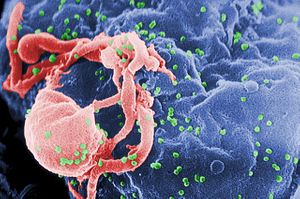Introduced in the final days of India’s prior United Progressive Alliance (UPA) led government, the HIV/AIDS (Prevention and Control) Bill, 2014, was amended and cleared by the current cabinet on October 5 this year. The National AIDS Control Program in India is attempting to stem cases of new infections as part of its target of ending the epidemic by 2030. Currently they estimate that about 2,170,000 people are living with HIV and 6.54 percent of them are children under the age of 15. In a meeting chaired by Prime Minister Narendra Modi, the cabinet pushed for important ways of tackling the disproportionate access to healthcare that afflicted people face, as well as consistent discrimination in the personal, social, and economic realms.
The bill itself focuses on access to healthcare, tackling discrimination, putting in networks to safeguard rights, and maintaining privacy and informed consent standards. The Amendment makes access to anti-retroviral treatment (ART) a legal right for those living with HIV. Obligatory ART provision at both the state and central level is mandated alongside the management of opportunistic infections that take advantage of immunodeficiency. It also prohibits acts of discrimination – by the state as well as by private individuals. This extends to employment, healthcare, education, public facilities, property rights, holding public office, and insurance.
Informed consent before tests, treatment, and research of patients’ conditions has been made mandatory per the amendment. Patient records are now required to adopt stringent data protection methods. Court proceeding of cases pertaining to people living with HIV have also been guaranteed privacy in different ways – suppressing identity and restraining the information published.
Furthermore, ombudsmen will be appointed to inquire into complaints on violations. Half-yearly reports by these ombudsmen, discussing the number and nature of these complaints as well as the action taken will be filed. Punitive treatment of discriminators includes jail terms of up to 2 years and possibly even significant fines. Guardianship rights have been reworked to bring into the fold older siblings above the age of 12 – allowing them guardianship over younger families living with HIV if they are competent. The standing committee has also issued instructions that afflicted people must have a non-discriminatory guarantee of insurance.
While this bill and amendment represent important steps in the war against the HIV/AIDS epidemic, there are still long strides to be made. Union Health Minister JP Nadda has asked for these stipulations to be implemented “as far as possible” and thus it remains to be seen how eagerly states will rise to this challenge. Meanwhile, testing is still not at 100 percent – with high-risk groups still having significant room for improved testing rates. For female sex workers, it is at 72 percent, for drug users it is at 71 percent, and for gay males at about 70 percent. Implications of this bill for at-risk members of the LGBTQI community can also only be properly analyzed once it is in place, given the multiplicity of stigmas they face in Indian society.
Above all, the bill and the amendment are key first steps in ending rampant discrimination against people living with HIV and AIDS in India today. But that is all they are. The hope is that they set the foundation for weeding out the prevalence of these conditions entirely.
































